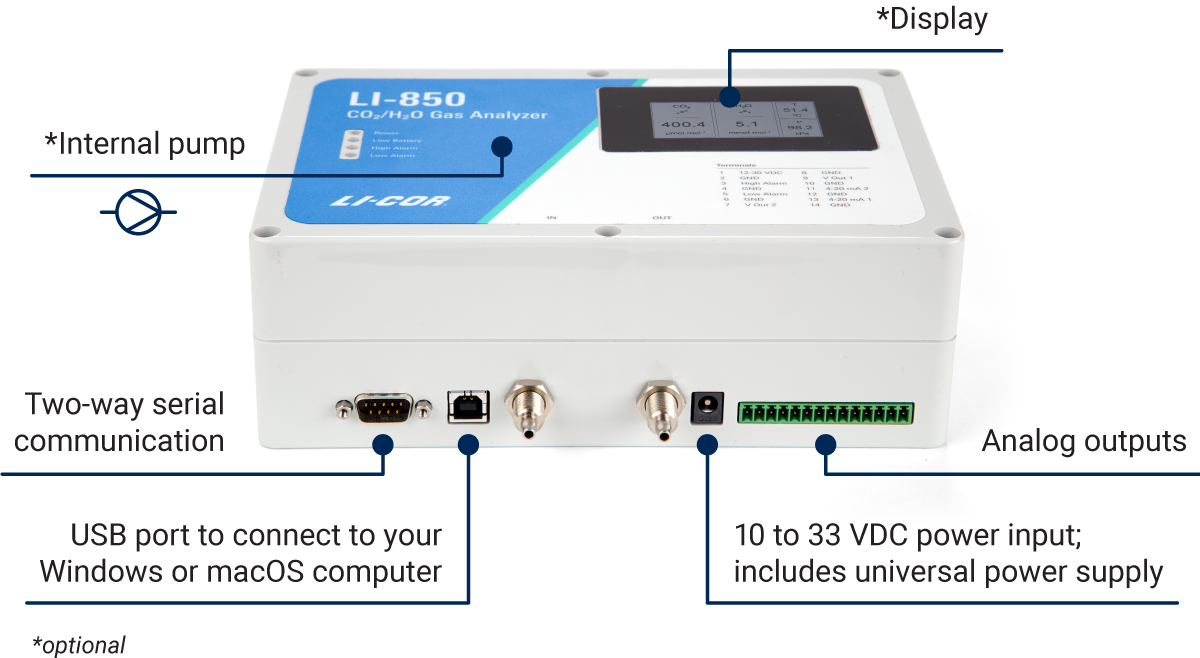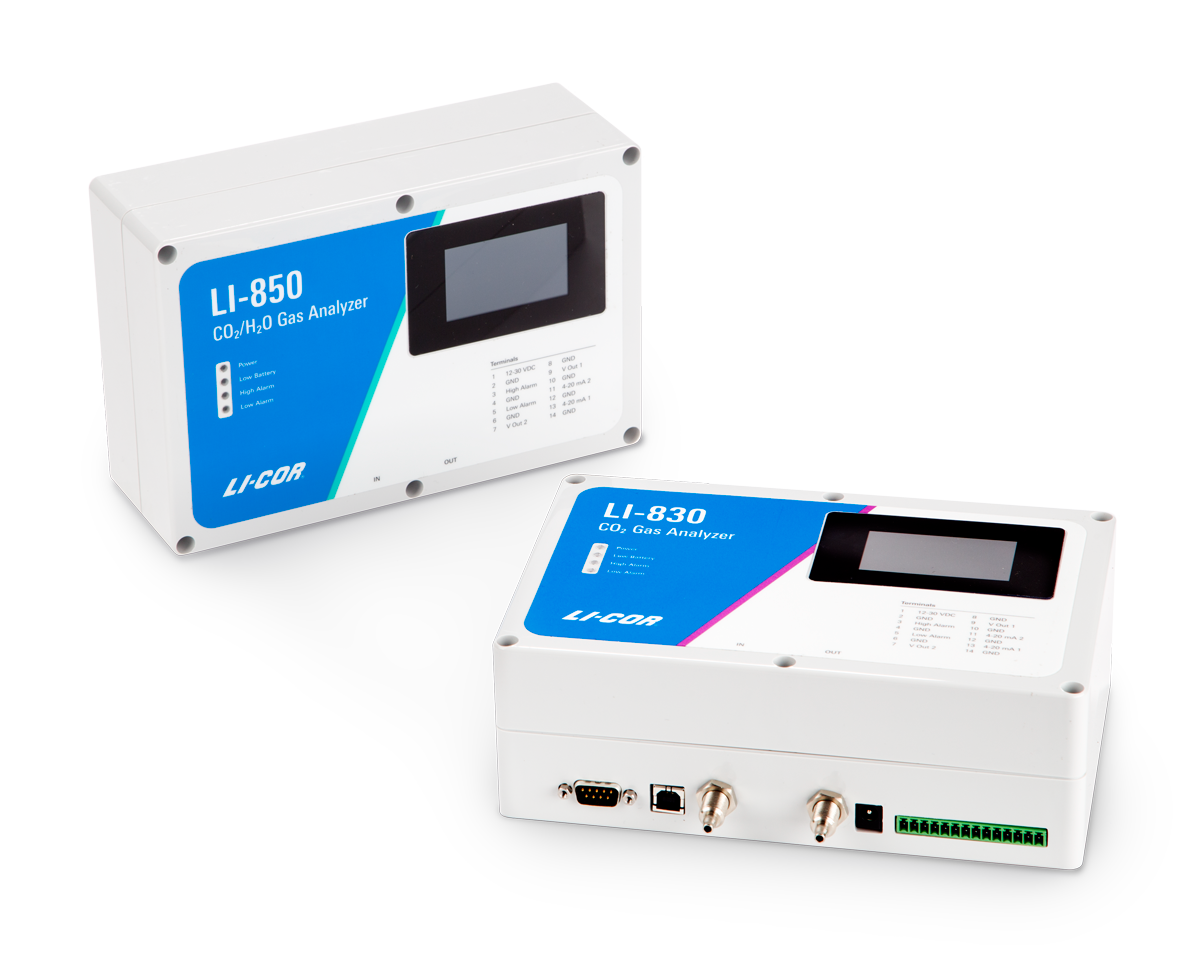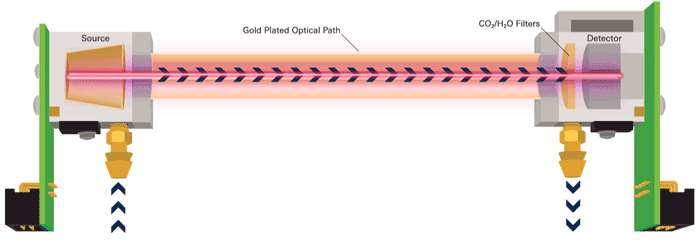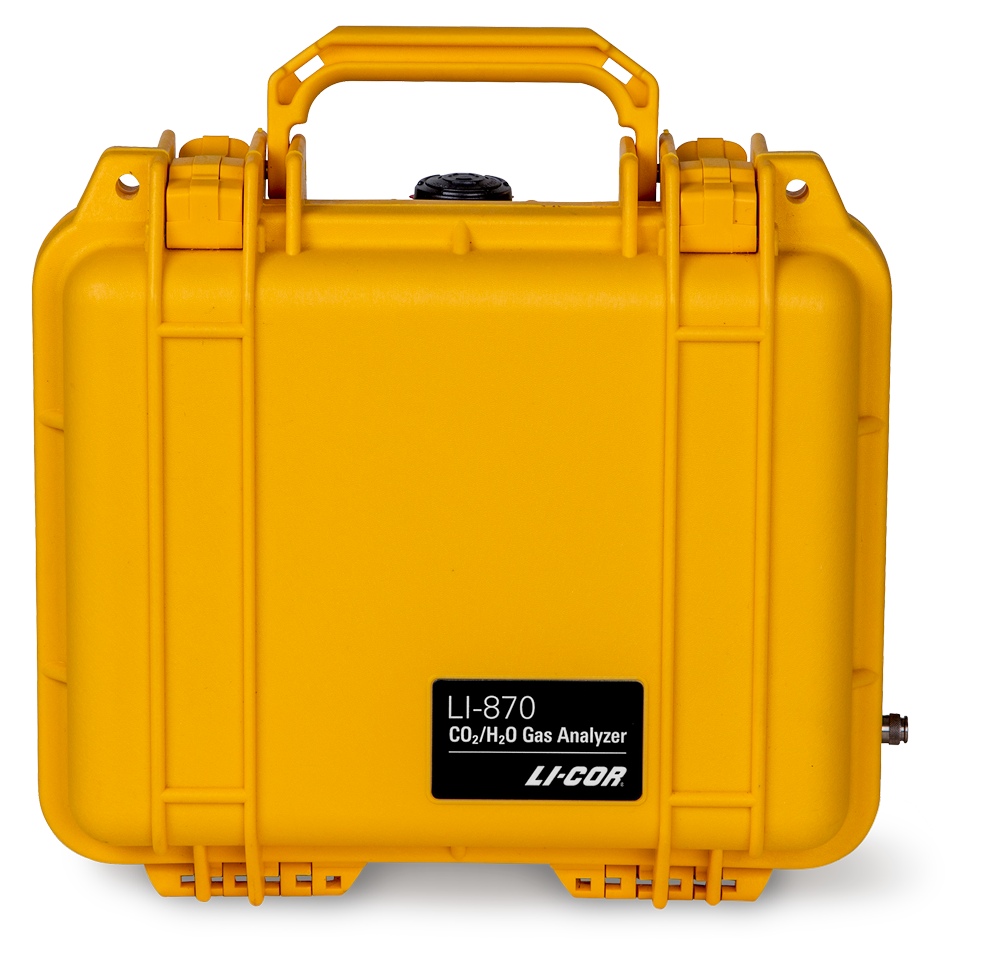Carbon dioxide gas measurements with the LI-830 and LI-850
When measurements are too important for unproven sensors
Some CO2 sensors are too simple. Other CO2 analyzers are costly and complex. But the LI-830 and LI-850 are just right – bringing proven performance at an economical price to provide CO2 gas measurements that you can depend on day after day.
Get a QuoteReliable
Long-lasting optics and high-quality components for reliable performance.
Proven
Modern electronics and software in a platform with decades of proven success.
Cost-effective
Durable components ensure excellent performance at a good price.
Trusted
Precision, accuracy, and stability so you get data that you can trust.
Reliable
Long-lasting optics and high-quality components for reliable performance.
Proven
Modern electronics and software in a platform with decades of proven success.
Cost-effective
Durable components ensure excellent performance at a good price.
Trusted
Precision, accuracy, and stability so you get data that you can trust.
What’s the difference between the LI-830 and LI-850?
The LI-830 measures CO2 in air. The LI-850 measures both CO2 and water vapor in air. The H2O measurement allows the LI-850 to account for band-broadening due to water vapor, and therefore the LI-850 reports CO2 concentrations with precision of 1.5% of the reading, in contrast to the 3% precision provided by the LI-830.
Versatility that is just right
Whether you are monitoring ambient CO2 concentrations, controlling a process, or measuring CO2 for an experiment, the LI-830 and LI-850 can provide the data you need for many applications.
The CO2 measurement range of 0 to 20,000 ppm, H2O measurement range of 0 to 60 mmol/mol (LI-850 only), and output rate of 2 measurements per second (2 Hz) are ideal for atmospheric air measurements and many general-purpose applications. Featuring USB, serial, and analog outputs, data can be logged to a personal computer, data logger, or your own data recording device, such as an Arduino®.
Low power requirements and light weight make it ideal for remote, mobile, and battery-powered deployments, including UAVs (drones) or on weather stations. The wide operating temperature range and onboard temperature measurements ensure consistent performance – even if ambient temperature changes rapidly.
The LI-830 and LI-850 are available with an optional pump for an out-of-the box flow solution and an optional display to view measurements in real time without a computer or datalogger. All LI-830 and LI-850 gas analyzers feature configurable alarms to trigger a switch when a CO2 or H2O threshold is crossed.

| LI-830 & LI-850 | LI-830-1 & LI-850-1 | LI-830-2 & LI-850-2 | LI-830-3 & LI-850-3 | |
|---|---|---|---|---|
| Pump | – | – | ||
| Display | – | – | ||
| Case | ||||
| Universal Power Adapter |

Dependability that is just right
The LI-830 and LI-850 are dependable and robust, providing low cost of operation. User-serviceable components minimize downtime. If maintenance is needed, you can do it yourself, typically, and the instruments do not require factory recalibration after service.
Measurements that are just right
With the LI-830 and LI-850, you don’t need to wonder about the quality of the measurements. You can trust the data while you turn your attention to more pressing concerns. Each LI-830 and LI-850 is calibrated at the factory with gas standards that are traceable to the WMO, EPA protocol gases, and NIST. Temperature controlled, insulated optics provide precision, stability, and accuracy over the full measurement range.
How do they work?
The LI-830 and LI-850 use non-dispersive infrared (NDIR) gas analysis to measure gases in air. A broad-band optical source delivers infrared radiation through the sample onto optically filtered detectors. Optical detectors measure the sample and reference bands to compute absorption by CO2 and H2O (LI-850 only). The CO2 concentration is computed by fitting absorption to a double-rectangular hyperbola (a ratio of polynomials). The H2O concentration in the LI-850 is computed with a third-order polynomial. Coefficients for the polynomials are determined by a thorough factory calibration procedure for each instrument, and the factory calibration is then verified across the measurement range. Read the Theory of Operation for a detailed summary.

Simplicity that is just right
Simple hardware and intuitive software mean that you can start taking measurements right away. You can view data, configure the analyzers, and set up data logging to your Windows® or macOS® personal computer. Each analyzer includes a USB cable and a universal power adapter that is compatible with mains power worldwide (100 to 240 VAC, 50 or 60 Hz input; 12 VDC output).
Just right for your application
With high-quality measurements, these small, light gas analyzers bring great performance at a great price for uses ranging from permanent installations to aerial platforms. The LI-830 and LI-850 are just right for many applications, including:
- UAV and drone-mounted CO2 measurement systems
- Indoor and outdoor air quality monitoring
- Greenhouses, controlled environment agriculture, growth chambers, and grow rooms
- CO2 partial pressure (pCO2) measurement systems
- Dissolved Inorganic Carbon (DIC) measurement systems
- Total Organic Carbon (TOC) measurement systems
- Atmospheric profiling systems
- Carbon sequestration studies
- Volcanology studies
- Injections site leak monitoring systems
- Insect respiration measurements
- Process controls for manufacturing
- Custom machine builders, system integrators, value-added resellers, or equipment manufacturers that seek to integrate a gas analyzer into a product.
Looking for an analyzer for soil CO2 flux measurements?
For soil gas flux measurements, consider the LI-870 – it is like an LI-850 with a special configuration, a weather-resistant case, a simple connection to the LI-8250 Multiplexer or Smart Chamber, and optimized data processing with SoilFluxPro.
